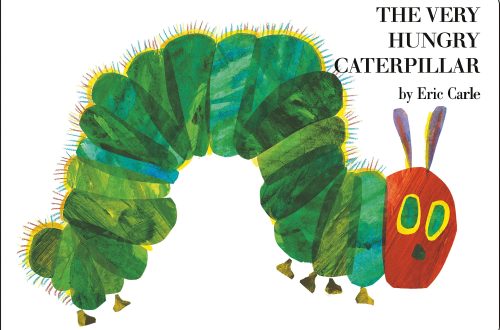
What Milk is Best for My Child Once They’re Weaned Off Breastmilk or F – The Baby Cubby
If the time has come that your baby has either weaned themselves off breastmilk or is ready to transition away from formula, you may be wondering what type of milk they should drink now. If you are like me, you probably don’t know much about any other kind of milk besides what you drank when you were a child, let alone which one is the recommended option for a child. It can be a tricky choice. So to help make this transition easier for you, we have researched information to help you know which type of milk you should be giving your toddler (past the age of 1) and why.
Types of Milk
First off, let’s talk about what types of milk are out there. The most common options include:
1% cow’s milk
2% cow’s milk
Whole cow’s milk
Skim cow’s milk
Lactose-free cow’s milk
Almond milk
Cashew milk
Soy milk
Goat’s milk
Organic milk (usually raw/unpasteurized, straight from the cow)
Oat milk
Soy milk
Rice milk
Coconut milk
With there being so many different varieties of milk, how are we supposed to know which milk is best for our growing babies/toddlers? It’s recommended that you have your baby drink breastmilk or formula until they are at least one year old, and one of the main reasons for that is because your child is growing an incredible amount in their first year.
But their growth doesn’t stop at age one, obviously, and milk is a great source of nutrition for their little growing bodies; however, the milk we prefer to drink as adults can be very different from the one their bodies need.

Why Choose Cow’s Milk?
Toddlers continue a steady rate of growth during their second year of life, with fat continuing to play an important role in brain development. That’s why you need to make sure that your child’s diet is optimized for their nutritional needs with both healthy fats and adequate calories, as well as other important nutrients such as also proteins, vitamins (D&A) and minerals (specifically calcium).
Cow’s milk is not the only way your child can receive this kind of nutrition (you can feed your child cheese or yogurt), but cow’s milk does have ideal nutritional value, plus it is the most researched as an approved transitional drink for your toddler (and growing kids past this age as well).

Stick to Whole Milk
Toddlers have extremely high fat needs in their diet. Whole milk has a high enough fat content to help meet their needs and to help with their brain development. Nonfat milk, or even reduced fat milk, will not adequately meet your child’s needs before the age of two the way whole cow’s milk will.
The high fat content in whole milk will help your child maintain healthy weight gain, support healthy teeth and bone growth, and contribute to increased muscle control. After age two, you can switch them to whatever milk the rest of your family drinks; however, it is still a good idea to keep them on whole milk if you don’t need to stop giving it to them.
What if My Child Can’t Drink Cow’s Milk?
According to HappyFamilyOrganics.com,
“Many of the non-dairy options are lower in protein, fat, and certain vitamins and minerals such as calcium, vitamin D, and B12 – all of which cow’s milk is rich in, which is why cow’s milk is recommended by the American Academy of Pediatrics. However, some children may have an allergy or sensitivity to cow’s milk. Or you may live a vegan/vegetarian lifestyle and aren’t comfortable giving your child cow’s milk.”
If cow’s milk is not an option for you, unsweetened, fortified soymilk is the only plant-based milk alternative currently recommended by pediatric experts.
Milks To Avoid
Rice Milk – This milk is lower in protein, fat, calories, vitamin and minerals than other dairy alternatives, and is also higher in sugar. Choose an unsweetened version if you still want to use it.
Almond Milk: This milk is also lower in protein than other dairy alternatives, but does have a bit more fat than rice milk or coconut milk. If you do use almond milk, opt for unsweetened versions fortified with calcium and Vitamin D.
Coconut Milk: This milk has low calories and little fat.
While we as adults may love these dairy alternatives, they simply do not provide the sufficient nutrients for growing children.
While it can be tempting to use any plant-based milk in place of cow or soy milk, most of these options are lacking important nutrients your toddler needs, such as protein, fat, and calcium. It is not recommended that these replace cow’s milk or soy milk unless specifically directed by your pediatrician. (Happy FamilyOrganics)
Whattoexpect.com has a helpful age-by-age guide to the best types of milk for your little one here.
Don’t Overdo It
Make sure your toddler’s diet includes other sources of protein and healthy fats as well. Something else to keep in mind is that even though your child may have been on an all-milk diet before the age of one, it is important to keep milk consumption to a certain limit, as it can be bad to give too much milk, read why here.
The American Academy of Pediatrics (AAP) recommends only 2 to 3 cups (16 to 24 ounces) of milk or milk-alternatives per day.

As parents we want our kids’ bodies and minds to be healthy, strong, and filled with all the nourishment they need to grow. Choosing the healthiest milk for your child doesn’t need to be stressful, and now you know what your best options are if whole milk doesn’t work for you.
Know also that it is completely normal if your child also doesn’t like milk or doesn’t drink enough of it (like my oldest child!). The trick is to find ways to still work that nutrition into their diet through other foods like yogurt, cheese, eggs, and more!
If you are still undecided on which milk is best for your child, or if you have more questions, remember that your pediatrician knows your toddler’s nutrient needs well and can help provide guidance on which milk or milk alternative may work best.
*The information is based on research, not the personal opinion/preference of the author





